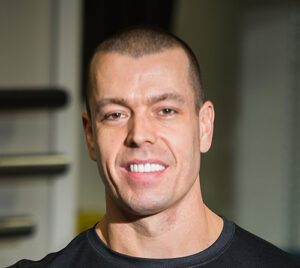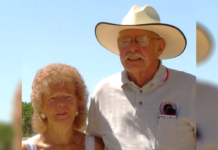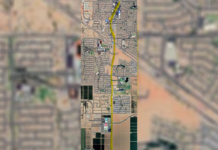
By Aaron Gilbert

Training the core is where most people run into trouble, because they try to train the core like a beast — with heavy weights, or a full range of motion. However, the key to core training for a healthy back is muscle endurance (not strength) and stability (not mobility).
In most day-to-day activities and the sports we play the core’s job is to stop movement.
For example: You open a door — your core stops your spine from twisting as you pull the door open with your arm. You kick a football — your core stops you from keeling forward.
Pause for a moment and think about what that means.
You want your core to be stable and resist movement. So why are we stretching, over-bending, and turning ourselves into pretzels?
Try these four exercises for a healthy and resilient back – modified curl-up, stir the pot, side bridge and bird dog.
The modified curl-up is different from a regular curl-up because one leg is bent while the other is straight; the hands are under the lower back and only lift the head and neck.
Stir the pot is a plank-type exercise done on a stability ball with the added challenge of stirring the pot (moving your arms as if you’re trying to stir a large pot). If that is too hard, you can just do a plank on the ball or even on the floor.
Side bridge is a side plank from the elbows.
Bird dog starts on all fours, like a dog. You lift the opposite arm and leg, focusing on stiffening the core. To make this harder instead of just lifting your arm and leg straight up and down, make squares at the top of the movement.
Keys to the exercises are to keep the tightening part of the exercise to 10 seconds and add reps to progress in the exercises, and to maintain form – once you can’t keep your spine tight, stop.
Stretching for a healthy back? While lower-back stretching is a no-no, certain stretches to keep the hips mobile are important.
Hamstrings: The key to hamstring stretching is to bend only at the hip and not the back. A good hamstring stretch that supports the lower back is to lie on your back and lift one leg up, keep the knee slightly bent and use a belt around your foot to pull the your lower leg toward your chest. Don’t worry, you don’t have to be Gumby. If you can get your leg perpendicular to the floor, you’re doing well.
Hip flexors (front of hip): Lunging with your hands over your head stretches the hip flexors (muscles in front of the hip), but remember to keep your back straight and torso upright, the front shin perpendicular to the floor, the rear knee pointed down and focus on stretching the front of your hip (squeezing the glute of the rear leg will help).
Aaron Gilbert, CSCS, owns Longevity Athletics.
520-261-4661
[email protected]
This column appears in the April issue of InMaricopa.















![Carl’s Jr plans to “open soon” An exterior view of the new Carl's Jr. restaurant along John Wayne Parkway on May 7, 2024. [Elias Weiss]](https://www.inmaricopa.com/wp-content/uploads/2024/05/E1C66482-CB4C-4FD0-BA30-35CECE93F4BE-100x70.jpeg)

![Filiberto’s eyes building Maricopa restaurant An exterior view of a Filiberto's Mexican Food restaurant at an unknown location and date. [Jessica Boehm/Axios]](https://www.inmaricopa.com/wp-content/uploads/2024/05/axios-050724-filibertos-screenshot-e1715117410101-100x70.jpg)